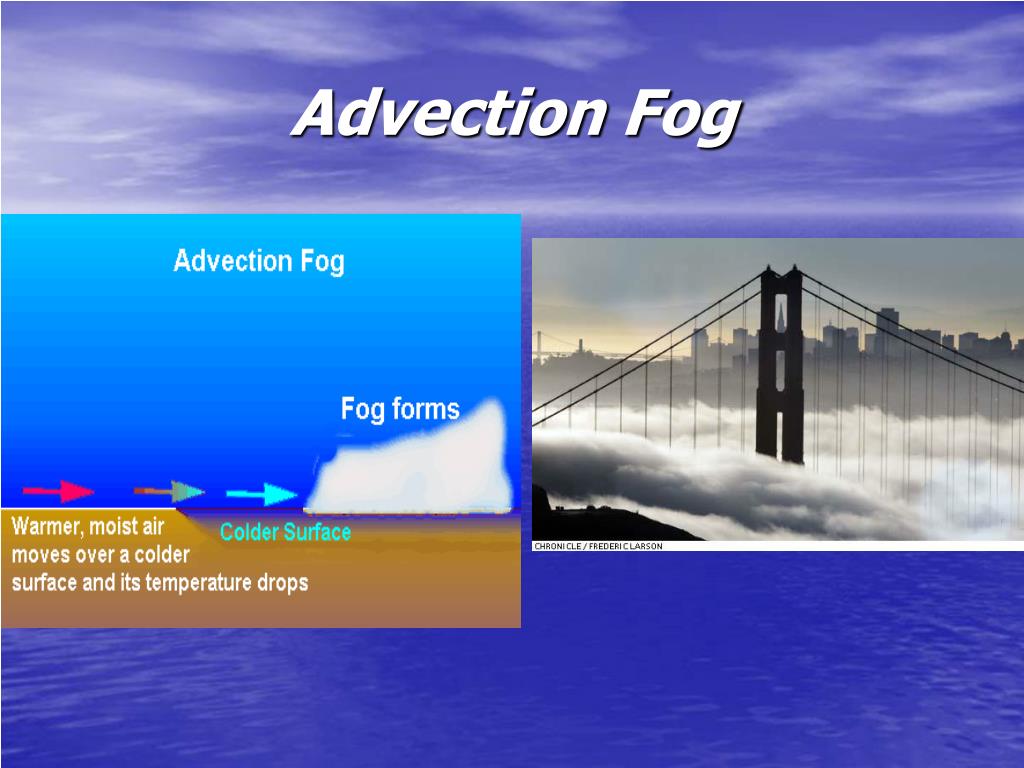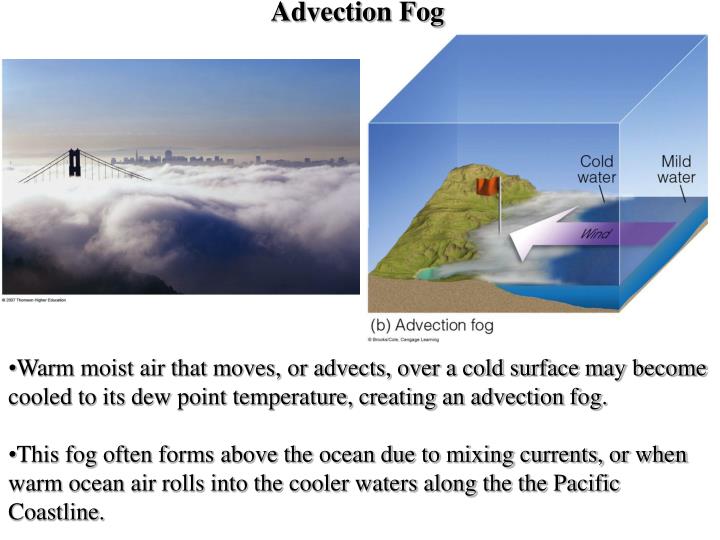

Understanding advection helps us comprehend weather patterns, heat transfer mechanisms, and the movement of air and water in various natural and man-made systems. It involves the transport of substances, such as heat or mass, by the bulk motion of a fluid. In conclusion, advection is a fundamental concept in the fields of atmospheric science, meteorology, and fluid dynamics. These currents transport heat and nutrients across vast distances, influencing climate and marine ecosystems. Ocean Currents: Ocean currents are driven by a combination of factors, including wind patterns, temperature gradients, and the rotation of the Earth. It uses a fan to circulate hot air within the oven, ensuring even heat distribution and faster cooking times. Ĭonvection Oven: A convection oven utilizes the principle of advection to cook food more efficiently.This occurs when the warm air cools down and reaches its dew point, leading to the condensation of water vapor and the formation of fog. Here are a few examples:Īdvection Fog: When warm, moist air moves over a cool surface, such as a cold ocean or a chilled landmass, advection fog can form. Examples of AdvectionĪdvection can be observed in various real-life scenarios. Conversely, if the fluid moves from a cooler region to a warmer region, heat transfer occurs in the opposite direction. When warm air or water moves from a warmer region to a cooler region, it carries thermal energy with it, resulting in heat transfer from the warmer area to the cooler one. In advection, the direction of heat transfer depends on the movement of the fluid. What is the direction of heat transfer in Advection? This type of advection is important in environmental studies and pollution control.

Mass Transfer: Advection can also involve the transport of mass, such as pollutants or chemical substances, by the movement of a fluid. It can enhance the rate of heat transfer and is commonly observed in systems like air conditioning or industrial processes. įorced Convection: Forced convection involves the movement of a fluid due to external factors, such as wind or mechanical pumps.This creates convection currents, which transport heat. When a fluid is heated, it becomes less dense and rises, while the cooler fluid sinks. Natural Convection: This type of advection occurs due to temperature differences within a fluid. Advection and its typesĪdvection can be classified into different types based on the driving forces and the nature of the transported substance. Similarly, the advection of cold air can result in the development of cold fronts and changes in temperature. For instance, the movement of warm air masses can lead to the formation of clouds and precipitation. In meteorology, advection plays a crucial role in shaping weather patterns. This movement is driven by the fluid’s motion, such as wind or ocean currents. In the context of advection, heat transfer occurs when warm air or water moves from one area to another, carrying thermal energy with it. To understand how advection works, let’s consider the example of heat transfer. This phenomenon is driven by the fluid’s motion, which can be influenced by factors like wind patterns, temperature gradients, and pressure differences. It involves the transfer of properties, such as temperature or concentration, from one location to another.

Image source Kmecfiunit, cm: Image source glee, CC BY-SA 4.0 via Wikimedia Commons:Īdvection can be defined as the process by which a substance is transported by the movement of a fluid.

In simple terms, advection refers to the transport of a substance, such as thermal energy or mass, by the bulk motion of a fluid. It plays a crucial role in understanding weather patterns, heat transfer, and the movement of air and water. Key Takeaways: Advection Convection Transport of substance by fluid motion Transfer of heat through fluid movement Occurs in weather patterns and ocean currents Important in atmospheric and geophysical processes Influences the distribution of pollutants Helps in heat transfer and energy distribution Understanding AdvectionĪdvection is an important concept in atmospheric science, meteorology, and fluid dynamics. Both processes play a significant role in weather patterns, ocean currents, and even the distribution of pollutants in the atmosphere. Advection refers to the transport of a substance by the bulk motion of a fluid, while convection involves the transfer of heat through the movement of a fluid. Advection and convection are two important processes that occur in fluid dynamics.


 0 kommentar(er)
0 kommentar(er)
